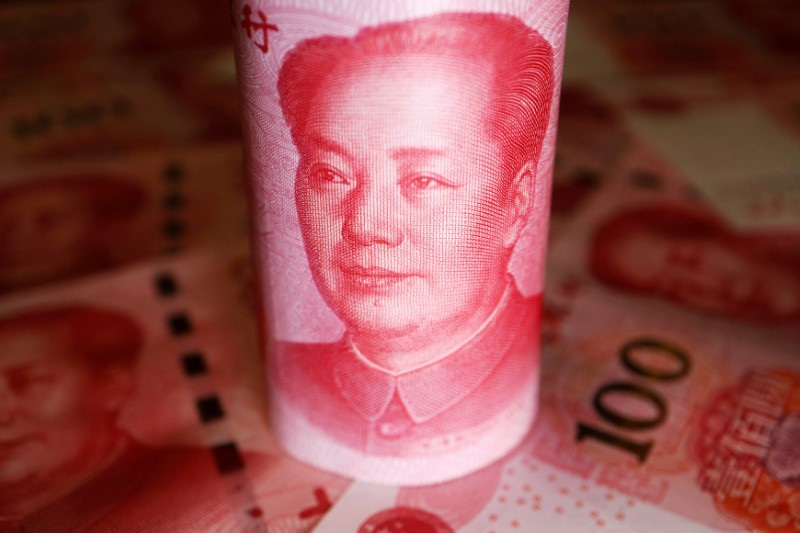Table of Contents
The global markets, usually a beast with many heads, have recently been shaken to their core. The culprit? A seismic unwinding of yen-funded carry trades. It’s got everyone glancing nervously at China’s yuan, a currency that’s also playing the role of a cheap funding source, though with its own unique twists and turns.
Now, let’s talk August—this month has been a rollercoaster for the yuan, which has suddenly shot up by a whole 2% against the mighty dollar. Yet, traders, those ever-watchful sentinels, are murmuring that yuan carry trades are not quite like their yen counterparts and aren’t about to unravel in a spectacular mess… at least not anytime soon.
WHAT IS THIS YUAN CARRY TRADE ANYWAY?
Alright, let’s dive into the murky waters of carry trades. Generally, investors snatch up low-yielding currencies—think the Japanese yen or the Swiss franc—to plunge into higher-yielding assets, often currencies, but sometimes even to finance daring stock trades with borrowed cash.
Now, here’s where the yuan steps in, trying to play the same game, but with a twist. The yuan isn’t fully convertible, which means there’s a bit of a leash on it. Yet, it still manages to sneak into the carry trade game.
Chinese exporters, with pockets full of yuan, are parking their cash in dollars. Meanwhile, foreign investors are borrowing yuan to dip their toes into mainland markets. And then there’s a crafty third type of trade, where the cheap offshore yuan is used to scoop up bonds denominated in dollars or other currencies. It’s like a financial ballet, with the yuan performing pirouettes and leaps, though always within the constraints of its choreography.
HOW DID THE YUAN CARRY TRADE EVOLVE?
Let’s rewind to the not-so-distant past—2022. The Federal Reserve was tightening its grip with aggressive rate hikes, while Beijing was loosening the reins to give a struggling economy some breathing room. For years, Chinese interest rates were towering above their U.S. counterparts.
As dollar yields began their ascent, Chinese exporters had a eureka moment. They could pocket up to 5% annually if they held onto their earnings in dollars, as opposed to the measly returns they’d get from yuan deposits. This dollar obsession among exporters has been a key force driving the yuan’s depreciation since April 2022.
And as the yuan lost its shine, an intriguing opportunity emerged for foreign investors. They could dive into onshore dollar-yuan swaps and rake in hefty spreads. Investors from afar would borrow cheap offshore yuan, flip them into U.S. dollars or other currencies, and then pour those funds into stocks and bonds. As the yuan continued its downward spiral, these investors would laugh all the way to the bank, reaping the benefits of conversion rates and the usual returns on their chosen assets.
HOW BIG IS THE YUAN CARRY TRADE?
Sizing up the yuan carry trade is like trying to catch smoke with your bare hands—analysts admit it’s no easy task. But one thing’s for sure: it’s not as colossal as the global trades fueled by the yen, which is a more liquid and open currency on the world stage.
Macquarie, the financial oracle, estimates that Chinese exporters and multinational companies have stashed away more than $500 billion in foreign currency holdings since 2022. Foreign companies, meanwhile, have been whisking their earnings out of China rather than reinvesting in the country.
On the flip side, foreign holdings of onshore yuan bonds have soared by 920 billion yuan (that’s about $128.12 billion) since the end of 2022, reaching a new peak in June, according to official data. This surge is a sign of the so-called “reverse yuan carry trade,” where foreign investors profit by lending U.S. dollars, borrowing yuan through currency-hedged swap trades, and then buying yuan bonds.
COULD THE CHINESE YUAN CARRY TRADE BE THE NEXT HOUSE OF CARDS TO COLLAPSE?
The recent unraveling of the yen carry trade, spurred by Japan’s rate hikes, has given the yuan a boost and sparked fears that the yuan carry trades might also be on thin ice.
UBS has observed that short positions in the offshore yuan have dwindled, given its growing dance partner relationship with the yen.
Onshore carry trades could potentially unwind if Chinese yields start to climb and the interest rate gap between the dollar and yuan narrows.
“The yuan carry trade will unwind once China’s domestic demand makes a dramatic comeback,” says Larry Hu, Macquarie’s chief China economist. “But the timing hinges on when policy stimulus in China becomes strong enough to turn the tide.”
So, the question remains: Will the yuan carry trade follow in the yen’s footsteps, or is it a different beast entirely, with its own set of rules and outcomes? Only time, and perhaps a few more market tremors, will tell.
($1 = 7.1809 Chinese yuan)

